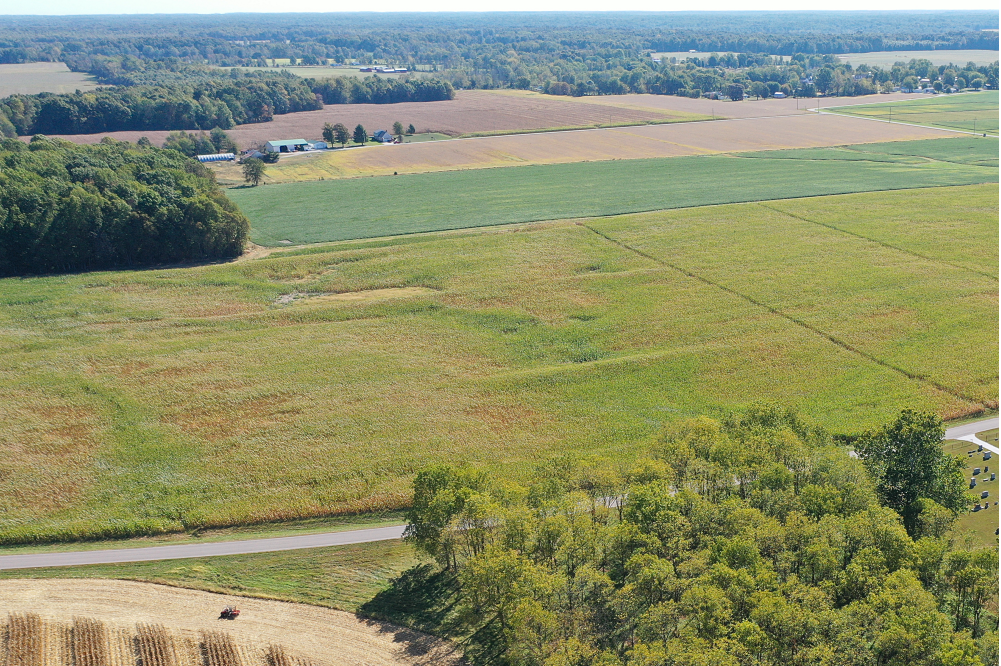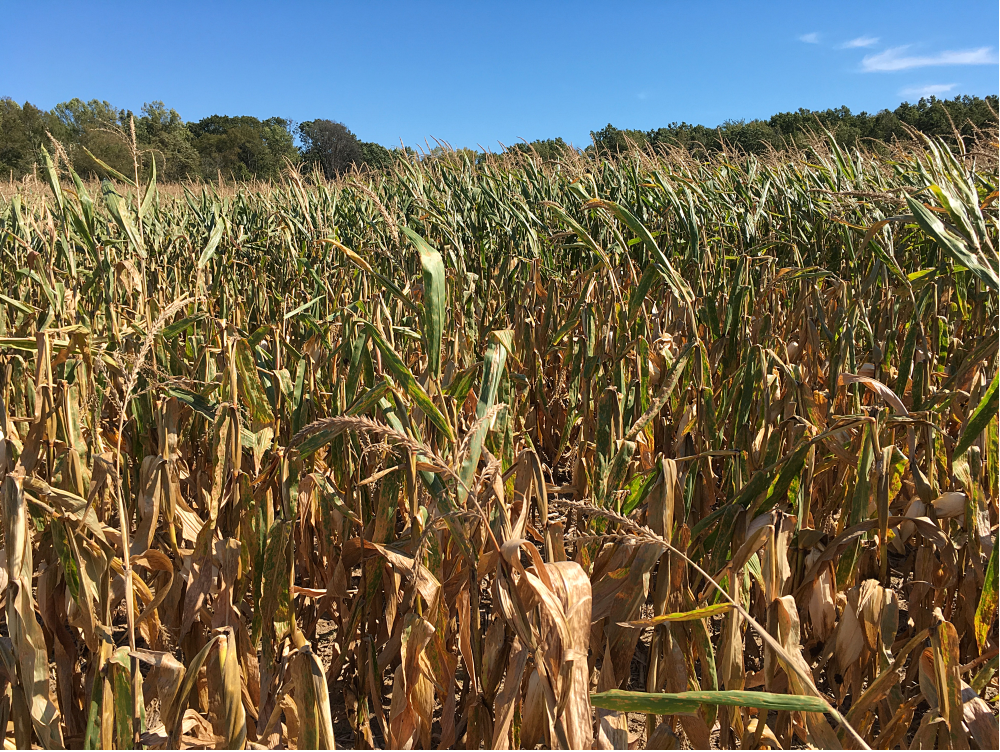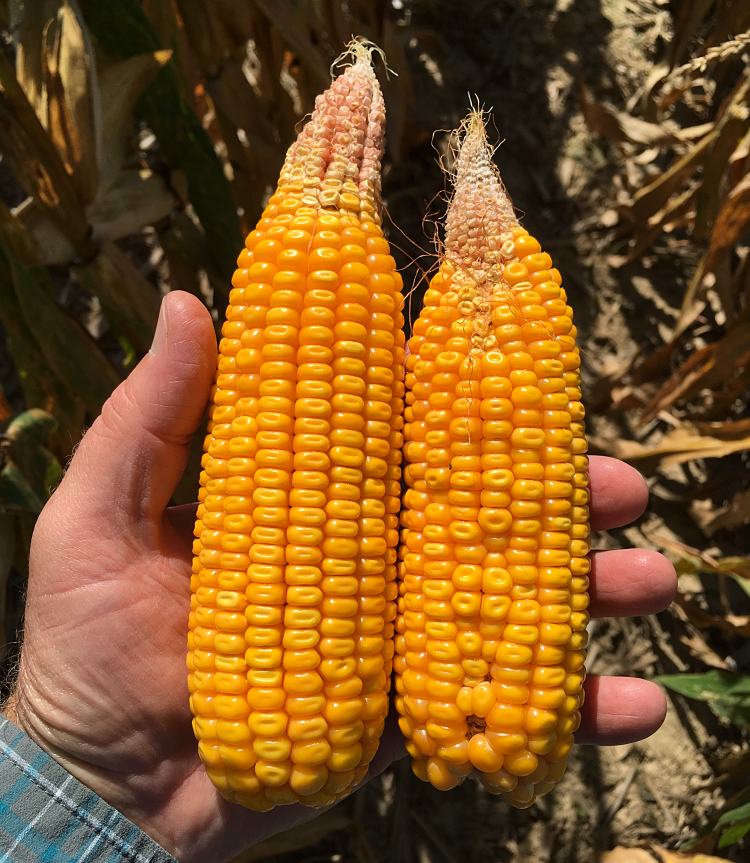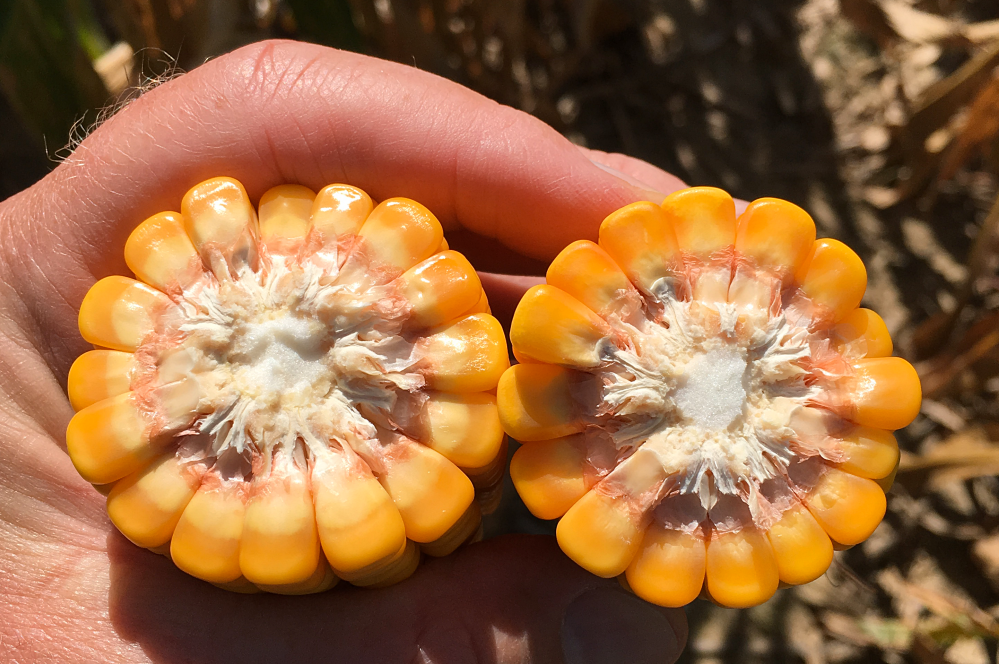Areas of Indiana have been exceptionally dry since early July. With no meaningful rainfall in recent weeks, the dry soils, and above normal temperatures, continue to cause problems for some late-planted corn fields as they enter the home stretch heading towards physiological maturity.
The photos that accompany this article illustrate spatial variability for premature plant death in a no-till continuous corn field in southeast Indiana that was planted on June 4 under less than ideal conditions… let’s just say that soil moisture at the time was “slightly wetter than desired”. Over the next 20 days, close to 11 inches of additional rainfall occurred on this field, including almost 7 inches over a 4-day period. Among the “casualties” of the June “monsoon” season was a root system unable to develop very deeply or extensively and, thus, dependent on timely rainfall the remainder of the season to avoid drought stress.
Unfortunately, rainfall has been largely AWOL over the past 60 days and has already reduced grain yield in fields like this due to kernel abortion (fewer kernels per ear) and smaller kernels. In response to continued pressure from excessively dry soils and above normal temperatures in mid- to late September, photosynthesis of shallow-rooted stressed plants simply “shut down” prematurely. In areas of the field that were still alive on September 27, kernels were at the so-called half-milkline stage and approximately 10 to 14 days away from physiological maturity. In areas of the field where plants were dead or dying, kernel blacklayer had already occurred (i.e., were physiologically mature) and kernel size was visibly smaller than those on ears from plants still alive.
Fields with spatially variable stress like this one will be challenging to harvest for a couple of reasons. The spatial variability that is apparent now for premature plant death will lead to spatially variable grain moisture at harvest, which will cause headaches at the grain dryer. Stalk health and integrity is already poor in those areas where plants are dead or dying. While waiting impatiently for the healthier areas of the field to reach physiological maturity AND dry down to harvestable moisture content, the risk of severe stalk lodging in the dead and dying areas of the field will increase with every passing day, leading to problems at harvest time if those areas of the field are lodged severely or even flat to the ground.
Situations like this, in a cropping season already fraught with problems, simply add insult to injury.
Related Reading
Nielsen, RL (Bob). 2018. Effects of Severe Stress During Grain Filling in Corn. Corny News Network, Agronomy Dept., Purdue Univ. http://www.kingcorn.org/news/timeless/GrainFillStress.html [URL accessed Sep 2019]
Nielsen, R.L. (Bob). 2019. Grain Fill Stages in Corn. Corny News Network, Agronomy Dept., Purdue Univ. http://www.kingcorn.org/news/timeless/GrainFill.html. [URL accessed Sep 2019]
Nielsen, RL (Bob). 2019. Stress During Grain Fill: A Harbinger of Stalk Health Problems. Corny News Network, Agronomy Dept., Purdue Univ. http://www.kingcorn.org/news/timeless/StalkHealth.html [URL accessed Sep 2019]







